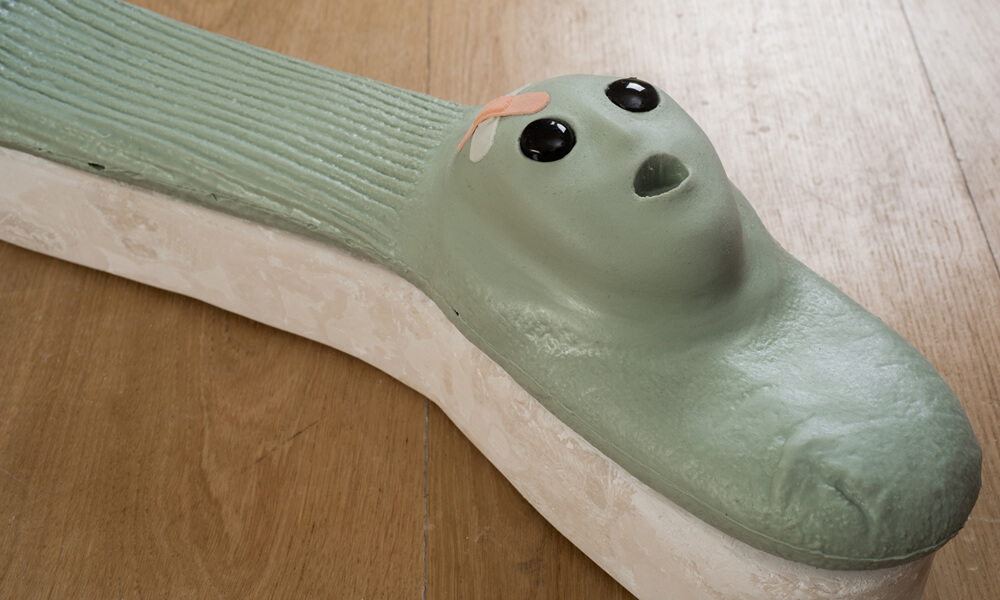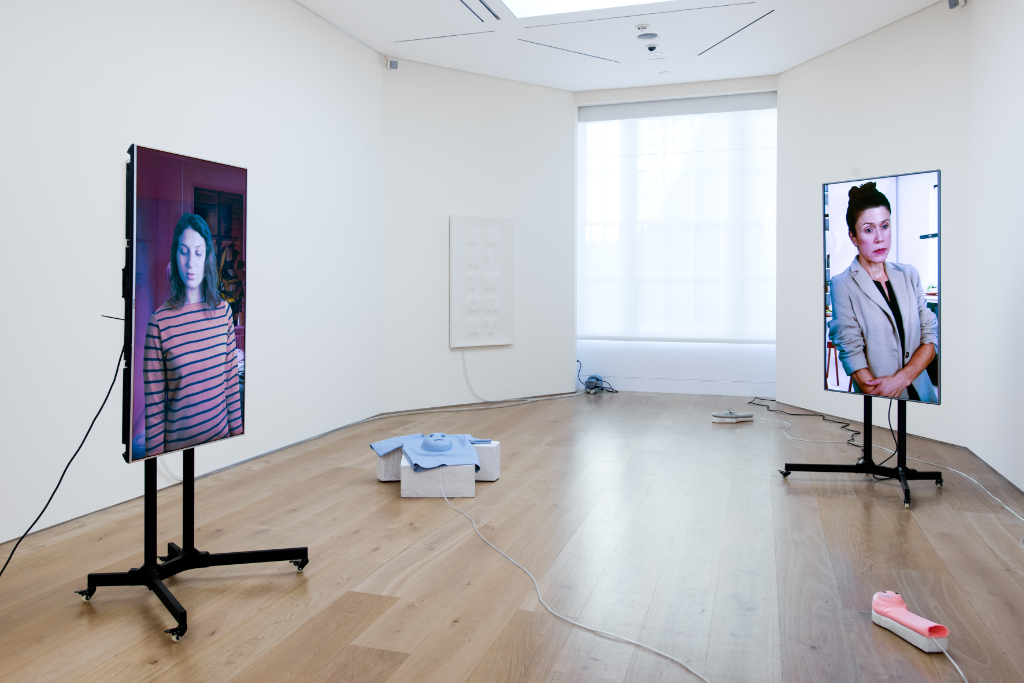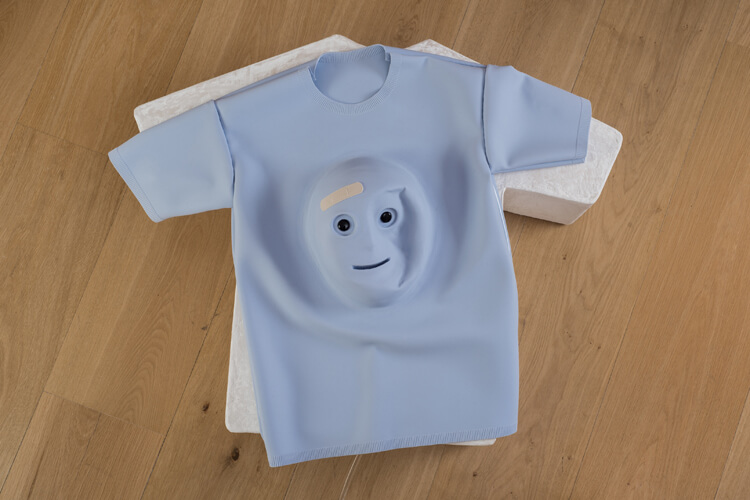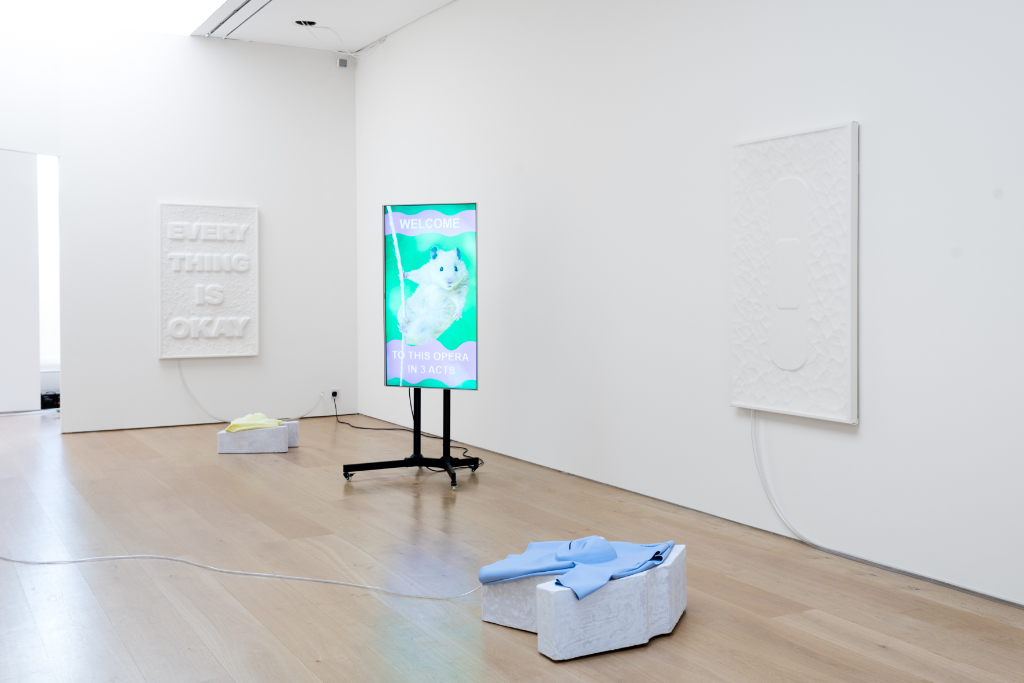Interview by Polly Bindmann

Perusing Antoine Catala’s website, you gain a sense of his slightly tongue-in-cheek approach to digital media. Browsing his site is a process analogous to experiencing his work – its elementary layout consisting of a series of closely connected links looks vaguely like a Word document created by a child, but once you click on those links, you are transported into the bizarre, uncanny world of Catala’s imagination, materialised through a series of projects that explore fascinating concepts often using highly complex experiments with technology.
Born in France, New York-based artist Antoine Catala gained a mathematics degree from the Univeristé Paul Sabatier in Toulouse before studying BA in Sonic Arts at Middlesex University in London and a BA in Fine Art at London Guildhall University. His recent achievements include being recently shortlisted for the Nam June Paik Award, as well as his most recent UK exhibition at the Marlborough Contemporary in London;
Everything is OKAY: Season 2, which showcased a series of kinetic or pneumatic objects using complex technology to articulate every day human emotions. Catala’s work is always playful, and yet belied by a dislocating sense of loss. He unflinchingly embraces new technologies as a means of interrogating the meaning of human relationships in the digital age, and in doing so creates works that are sharply perceptive, tinged with irony and yet intent on capturing a profound sense of what it means to be human in the modern world.
In Everything is OKAY: Season 2, Catala uses the semiotics of current forms of communication, including emojis and text messages, leading you through an almost domestic setting, scattered with everyday objects that are eerily inscribed with vibrating emojis that appear to be breathing as pneumatic devices trigger them.
The effect of viewing emojis wearing plasters and perplexed expressions as they struggle for air hooked up to what looks like palliative equipment is jarring – as are the pastel-coloured panels made of artificial materials, inscribed with phrases like ‘don’t worry’ and ‘everything is okay’.
Catala evokes an unsettling atmosphere as he reveals the hollowness of cheerful platitudes and disjointed modes of digital communication, literally and symbolically deflating the semiotic paraphernalia of modern life through ominous, saccharine objects that induce a simmering sense of anxiety.
A fascination with the interrelation between signifier and signified in the digital age underscores much of Catala’s work. In particular, Antoine wishes to highlight our dependency on images and also our psycho-physical connection to them. This concept is powerfully explored in his 2015 exhibition Distant Feel – commissioned Carnegie Museum of Art, Pittsburgh. Here, Catala presented a body of work addressing how images provoke emotion, especially in the modern day, where the internet mediates emotion.
For this project, Catala collaborated with New York advertising agency Droaga5 to create a ‘rebrand’ for empathy by embodying the sentiment in the symbol E3 and a catchphrase ‘distant feel’, which he materialised in a series of works including hyper tactile fabric images, and a live coral sculpture of the symbols E3 – a kind of ad of the future.
Here, Catala explored the notion that whilst empathy is necessary to the bonding of humans, for some, it can be subdued – particularly when mediated through screens which creates a distance from the world. This idea played out because whilst his objects were invited to touch, the audience was forced to restrain themselves from physically engaging.
Other instances in which Catala plays with the gaps in-between meaning include the 2012 show I See Catastrophes Ahead, where words, images and the material world are united through a kind of material pictogram, where a series of object images spelt out the show’s title – (catastrophes – cat, ass, trophies). Paralleling the notion that a sentence is a kind of incantation is the fact that in the internet age, typing out a word opens the door to an infinite universe of stories, pictures, sounds and images – a flood of possible incantations. Catala relentlessly opens the floodgates of meaning by delving below the surface of symbols, powerfully interrogating our approach to meaning in the modern age.




You have a background in mathematics, sonic arts and fine art. How and when did the interest in these different disciplines come about?
I studied mathematics because of the beauty of its language. It’s a perfect headspace for a dreamer like me. Sonic arts carry a similar purity to it. I still incorporate sound or music in all my projects, often done by or with my friend Olivier Alary. Fine art is a bit of a mixed bag, where anything goes; a way to join these interests.
What are your aims as a new media artist exploring the semiotics of the current forms of communication?
The common trope is that we, humans, adopt forms of communication that, in turn, transform us. I say that we adopt these forms because, both individually and collectively, we want to embrace these transformations.
We are excited to change, for better or worse, especially if it doesn’t cost us too much effort. If we were projected back into medieval times, we would adapt pretty fast to the forms of communications of there and then, and so would medieval peasants too. I study forms of communication because they tell us a great deal about who we are.
In Everything is OKAY, your most recent work, you explore emojis and text messages and the effects of new communication technologies on society. Could you tell us a bit more about the intellectual process behind it?
Emojis are these silly icons added in text messages. They are a detail in the big picture, which initially seems totally innocuous. I actually receive more emojis from my older female friends than anyone else! Yet emojis tell us something about the direction language is headed. It’s going so fast that we communicate increasingly with (canned) emotions. That’s because emotions are probably the fastest, most visceral way of communicating. Secondly, texting is asynchronous – I mean by that that any conversation can be started and paused at will by both parties. Text messages allow us to carry on our fragmented duplicitous daily lives.
Emojis cannot exist without text. One cannot have a full conversation using just emojis. Thus Emojis are parasitic to text. They need language to exist. Emojis seem to come from the aural, the spoken. It’s like intonations added to the written form. It is necessary. So many misinterpretations, miscalls, and offences occur because people communicate via text messages. Emojis were introduced to lighten things up, to tell your interlocutor that everything is OK. The paradox is that I would argue that sending an emoji is more pleasurable than receiving one. So communicating that way is like pleasuring oneself, thinking of pleasuring someone else, akin to masturbation.
Is virtual reality a media you have considered using for your art? Is it a good media through which to communicate your ideas, or does it omit something important as the experience is quite isolating?
Media is reality. I think the US, where I live, is a media country because of the sheer dimension of the country, and it brings common values to a melting pot. In the US, media was critical to the nation’s birth and its empire’s development. Here people seem more concerned about how they are being mediated than what occurs in their real life. That dichotomy is fascinating. I still prefer early video games that were more an idea of what they represented rather than realistic ones. More generally, I work with technology, and I don’t care so much about using technology. I rely mostly on old antiquated technologies or proto-cinematic effects to make my art.
In the present world, our email servers are starting to be able to predict some of our most used replies, or we can be talking to a bot on the phone and believe it’s a real person. How do you predict technologies enhanced by Artificial Intelligence will impact the way we communicate in the future where it seems, as Marshall Berman told us in the early 80s, all that was solid (or real) is melting into the air?
It could be a great liberating tool for people to spend all their time walking in nature, having their computers chattering away at each other. Still, with the way things are going, I see it as a way for more servitude and oppression between people. As for a new form of intelligence, I welcome the art, the music, the writing, and the conversations we will have with those machines.
A part of me still thinks, like Frank Herbert, the writer of Dune, that commanding robots around will habituate people to be meaner to each other. I usually remain courteous when I talk to machines, I believe in karma.
How has having a scientific background (and mathematics, no less) impacted how you conceive your art?
I think in systems. Many of my exhibitions are conceived as systems, like platforms to dismantle how we communicate.
What is your chief enemy of creativity?
Too much alone time. I need to see the world or nature. The more random, the better.
You couldn’t live without…
Great art, great human feats.





